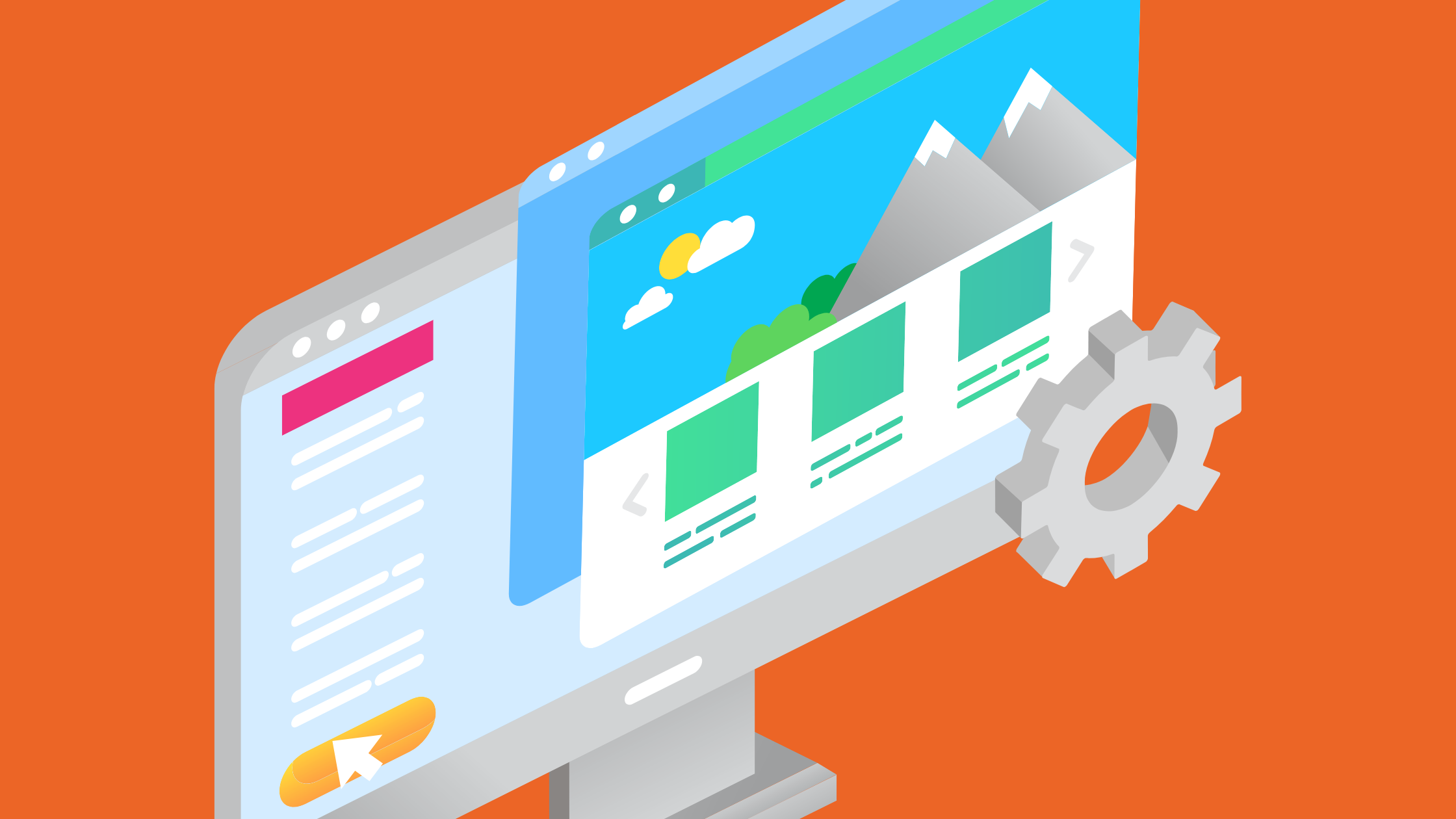How to Make a Money Making Landing Page (#7 is the Best!)
Landing pages are potent tools in digital marketing. How? The benchmark to measure ideal conversion for landing pages is 9-10%. On average, the conversion rate for these pages across industries is also in the same range, according to HubSpot. So if you’re looking to make a landing page that will get you in the same game, then look no further.
We will go over the basics of what makes a high-converting landing page and then give you some tips on designing and structuring your own landing page.
So whether you’re just starting or the one you created isn’t performing well, following these steps will help you create the kind of LP that makes money.
Landing Pages – What for?
Landing pages are a powerful tool for businesses and brands because they allow you to collect leads and convert them into customers.
Unlike a website, which is usually used to provide information about a company or product, a landing page is a standalone web page specifically designed to get people to take a specific action, such as signing up for a mailing list, buying a product, or downloading a white paper.
Because it’s a standalone web page, it is a feasible marketing tool that every marketer needs to utilize, no matter how little or extensive their experience in making them is.
By using a dedicated landing page that is well-designed and easy to scan, you can increase your chances of converting more leads into customers.
The Benefits of Using Landing Pages
There are a number of benefits of using landing pages, including:
- The chances of converting leads into customers are higher
- Proven to increase traffic by attracting more site visitors
- Targeted design that focuses on guiding leads to take one specific action
- More effective than websites in making people interact
- Highlights your credibility as a brand
- Effective lead-generating tool
Types of Landing Pages
Landing pages are a crucial component of any successful digital marketing campaign. They are designed to drive visitors to take a specific action, such as purchasing, filling out a form, or subscribing to a service.
However, not all landing pages are created equal. In fact, several different types of landing pages can be used depending on the specific goals of a marketing campaign.
- Lead Generation
- Product
- Click-Through
- Thank You
1. Lead Generation Landing Pages
Lead capture landing pages are web pages designed to capture leads or potential customers for a company’s product or service. These pages are built with a single goal: to get visitors to fill out a form, click a button, or take other actions that put them in the company’s sales funnel.
The information collected can be used to follow up with the leads via email, phone calls, or other marketing tactics. In addition, these pages are often used as part of a larger marketing campaign and can be optimized for a specific audience or demographic to increase conversions.
2. Product Page Landing Pages
Product landing pages are designed to promote and sell a single product or service. These pages are intended to provide a focused, direct message highlighting the product’s key benefits and encouraging the visitor to take action, such as purchasing or signing up for more information.
Effective product pages are typically visually appealing, with clear and concise content that speaks directly to the target audience and a solid call to action that guides the visitor to take the desired action.
3. Click-Through Landing Pages
Click-through landing pages are web pages designed to persuade the visitor to click through to another page or website, usually a product or service page.
This landing page aims to provide the visitor with enough information about the product or service to make them want to learn more and take action while minimizing distractions or options that could take them away from the desired action.
This is often accomplished by using straightforward and persuasive language, focusing on the benefits of the product or service, and including a prominent call-to-action button or link.
4. Thank You Landing Pages
Thank you pages are pages that visitors are directed to after they have completed a specific action, such as filling out a form, subscribing to a newsletter, making a purchase, or downloading content. These pages are designed to acknowledge the completion of the action and express gratitude to the website visitor for taking the time to interact with the website.
Thank you pages also provide additional information about the next steps, offer related content or products, or encourage visitors to share their experiences with others.
These pages can convert visitors into customers by reinforcing their decision to engage with the website and maintaining a positive relationship with them.
15 Easy Steps to Create a Winning Landing Page

After discussing what landing pages are and why they’re proven tools in business, it’s time to create your own for your marketing campaigns.
Whether you use a landing page builder or not, this will walk you through the 15 simple and standard steps to designing the type of landing page that will get you positive results.
1. Plan your landing page ahead
Planning a landing page before creating it is essential to its success. It’s what will help you finish with a dedicated landing page that will stay true to your goals.
By planning what you want your landing page to achieve, you can focus on creating content that will help you reach your goals. In addition, it will lead to better efficiency when using landing page builders.
Landing page builders take so much of the work out of creating these pages, but with a plan, precious time could be used.
Some things to consider when planning your landing page include the purpose of the landing page, the target audience, and the call to action. If you can answer these questions before designing your landing page, you will be well on your way to creating an effective landing page.
2. Choose the suitable template for your goal
Like web page templates, landing page templates also make creating landing pages quick and easy. By using a template, you can avoid the hassle of starting from scratch and get right to designing your landing page.
Templates also give you a head start on adding content to your landing page, which can help save time and ensure that your landing page is well-rounded. Also, landing page templates are often customizable, so you can make them fit your needs.
If you’re looking for an easy way to create a landing page that looks great and delivers results, working with a landing page builder will make the process quicker.
3. Write a catchy headline

Creating a catchy headline for your landing page is essential to having a successful landing page or having one just there for the sake of having one. This step is especially crucial in click-through landing pages.
By creating a headline that grabs people’s attention and makes them want to learn more, you can increase the chances of converting leads into customers.
The headline is the most crucial part of your landing page; if it isn’t catchy, people won’t stick around to read the rest. That’s why it’s so important to spend time crafting a headline that will make people want to learn more.
There are a few things you can do to create a catchy headline:
- Use keywords that will grab people’s attention
- Make sure your headline is relevant to what the landing page is about
- Keep it short and sweet
- Try using a question as your headline
- Makes readers want to read more
4. Add persuasive content to your landing page
A dedicated landing page must be persuasive to convert leads into customers. If it’s not, you might lose your viewers very quickly. Conversely, compelling content to your landing page can increase the chances of converting more leads into customers.
When creating persuasive content for your landing page, some things to consider include using strong verbs, focusing on benefits rather than features, and keeping it short and sweet. If you follow these tips, you will be well on your way to creating a landing page that is persuasive and effective.
5. Use images and videos
When creating a landing page, remember that you’re trying to sell something. And to do that successfully, you can’t bore the viewers.
Therefore, landing pages with visuals are more effective than those without. This is because visuals help grab and engage people’s attention, leading to more conversions.
According to Xerox, people are ‘80% more likely to read content with colorful visuals.’
6. Structure your landing page in a user-friendly way

Landing pages need to be user-friendly to be effective. This means they should be easy to navigate and understand, with clear and concise content. Using a landing page builder will make this task easier.
Suppose the landing page needs to be clearer or easier to use. In that case, people will not stick around long enough to convert into customers. Notably, 86% of the top landing pages, mostly home pages to websites, are mobile-friendly.
To ensure that your landing page is user-friendly, make sure to:
- Use simple and easy-to-read fonts
- Make sure all links are easy to find
- Keep the layout simple
- Avoid using too much text
7. To add credibility, add testimonials to your landing page
Landing pages are an essential part of any online marketing strategy, and one of the most effective ways to convert leads into customers is by using testimonials. By adding testimonials to your landing page, you can increase the credibility of your business and improve the chances of converting more leads into customers.
Testimonials are a great way to add credibility to your landing page because they provide social proof that your product or service is worth buying. Additionally, testimonials can help persuade people on the fence about whether or not to buy from you.
According to Search Engine Land, 36% of the best landing pages use testimonials, and 85% of viewers say they read up to 10 reviews before deciding to trust a particular product or service. So, if you want to create a great landing page, add testimonials!
8. Offer a freebie or discount
One of the best ways to increase the chances of converting leads into customers is by offering a freebie or discount on your landing page. People are more likely to buy something if they know they’re getting a good deal.
There are a few things you can do to include entry point offers on your landing page:
- Include clear and concise information about the offer
- Make sure the offer is relevant to what the landing page is about
- Make sure the offer is enticing enough to get people’s attention
9. Use strong calls to action on your landing page

A strong call to action is always a must. Did you know personalized calls-to-action (CTAs) perform 202% better than default versions? A compelling call to action is critical to converting leads into customers. Using a strong, persuasive call to action can increase the chances of converting more leads into customers.
There are a few things you need to keep in mind when creating a call to action:
- Make sure it’s clear and concise
- Make sure it stands out from the rest of the landing page
- Make sure it’s relevant to what the landing page is about
Adding social media buttons to your landing page can increase the chances of converting leads into customers. This is because when people see buttons for popular social media platforms like Facebook and Twitter, they are more likely to share your content with their friends and followers.
According to an infographic by GetResponse, ‘When landing pages include social sharing buttons, conversions increase by 158%.’ Additionally, ‘Sharing on social media increases brand awareness and drives traffic back to landing pages.’ So if you want to increase the effectiveness of your landing page, be sure to add social media buttons!
11. Make sure the design and layout of your landing page are appealing
A well-designed landing page can make a difference when converting leads into customers. A good landing page should be easy to navigate, have a clear and concise layout, and use simple fonts that are easy to read.
Suppose you’re creating lead generation landing pages to ask for information from leads. In that case, you must ensure they’re interested in your offer. One way to do that is to design appealing layouts carefully.
Additionally, ensuring your landing page’s design and layout appeal to potential customers is essential. This means using visually appealing colors and images and including social media buttons to encourage users to share your content.
12. Track the results of your landing page

Tracking is one of many landing page best practices that shouldn’t be overlooked. Without the habit of tracking, it’s hard to develop a strong landing page, let alone a reliable digital marketing strategy.
A landing page is critical to any digital marketing campaign, but it’s only effective if you can track its results. By tracking your landing page results, you can determine whether or not it’s converting leads into customers. Additionally, you can use the data to make changes and improve the landing page to increase its effectiveness.
There are a few ways you can track the results of your landing page:
- Use Google Analytics to track how many people are visiting your landing page
- Use A/B testing to test different versions of your landing page against each other
- Track conversion rates to see how many leads are being converted into customers
13. A/B split test your landing page
Before assuming the position in 2012, according to Medium, Former US President Obama’s election campaign raised an additional $60 million through effective A/B testing of campaign strategies.
A/B testing, also known as split testing, compares two versions of a landing page against each other to determine which one is more effective at converting leads into customers. This process can help you improve your landing page’s effectiveness and increase the number of leads converted into customers.
A/B testing can help you make better decisions about your website. For example, A/B testing is a step beyond getting stuck in the guessing game if you want to create effective landing pages.
14. Make sure your landing page is responsive on all devices
Landing pages are critical to any online marketing campaign and must be responsive on all devices. Potential customers may visit your landing page from various devices, including desktop computers, laptops, tablets, and smartphones.
You could lose potential customers if your landing page isn’t responsive on all devices.
15. Optimize and improve your landing page

Optimization, like tracking, is one of many landing page best practices. Landing pages are a critical part of any advertising campaign, but like Google ads, they can only be effective if optimized and improved. Optimizing and improving your landing page can increase its effectiveness in converting leads into customers.
FAQs
As a marketer or business owner, you may be familiar with a landing page – a web page designed specifically to drive conversions and capture leads. However, you may still have questions about what a landing page is, how it differs from other web pages, and how to create an effective one. In this section, we will answer these questions to help you understand the importance of landing pages in your digital marketing strategy.
In Summary
After reading this guide, you should understand what it takes to create landing pages that make money. Then, by following the 15 easy steps we’ve outlined, you can increase your chances of converting website visitors into paying customers.
Remember always to test and optimize your pages so they are constantly improving; there is no such thing as a perfect landing page, but with some effort and tweaking, you can come close! Have you created any successful landing pages lately? Let us know about them in the comments below.


